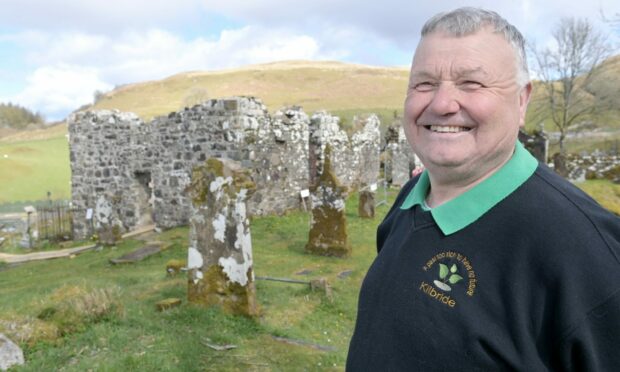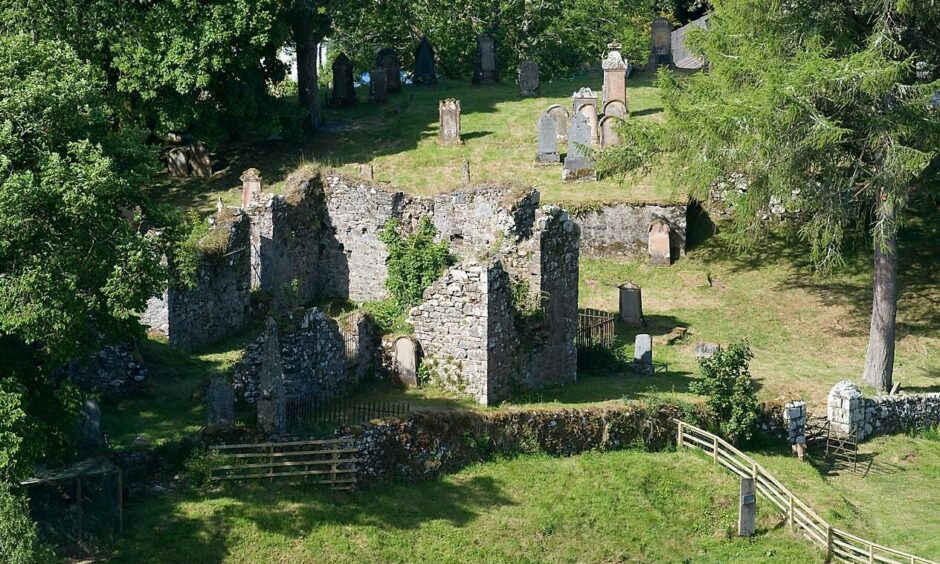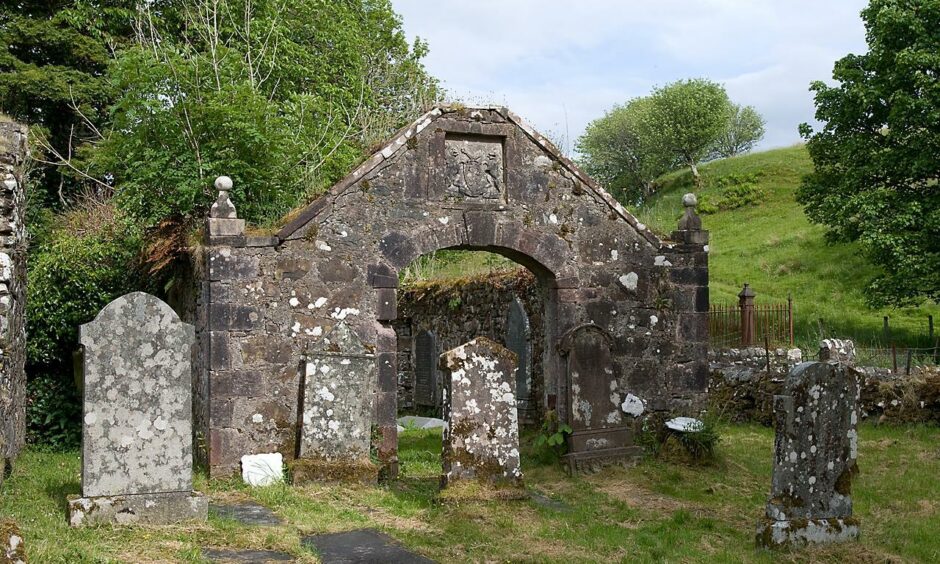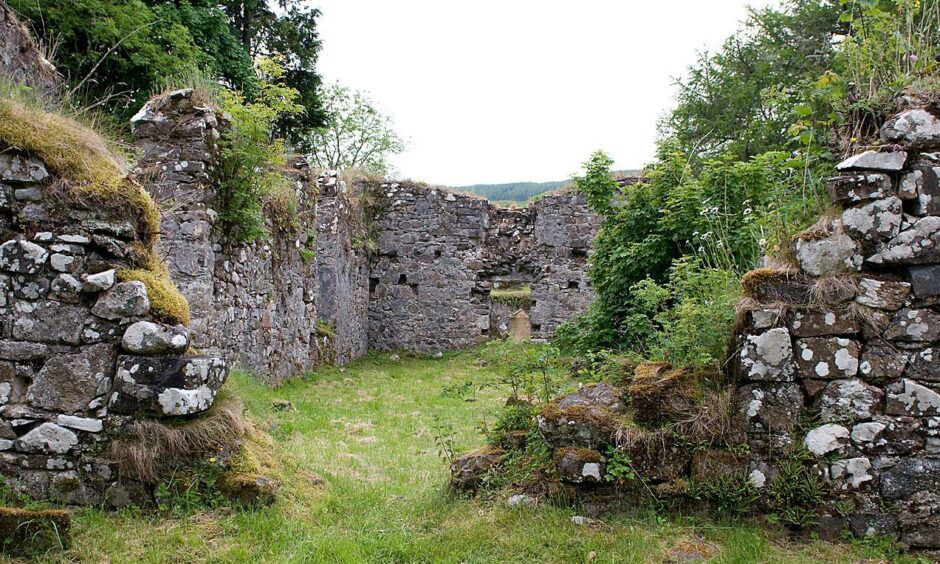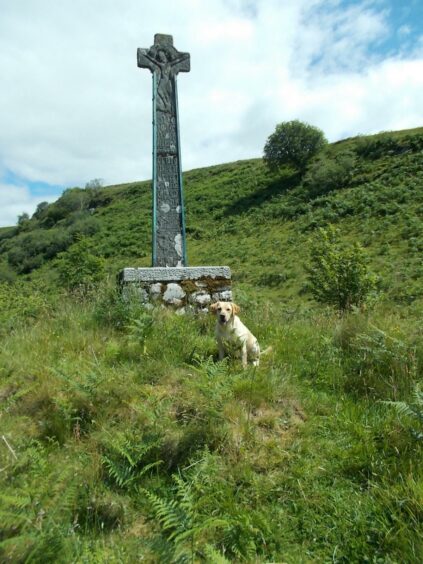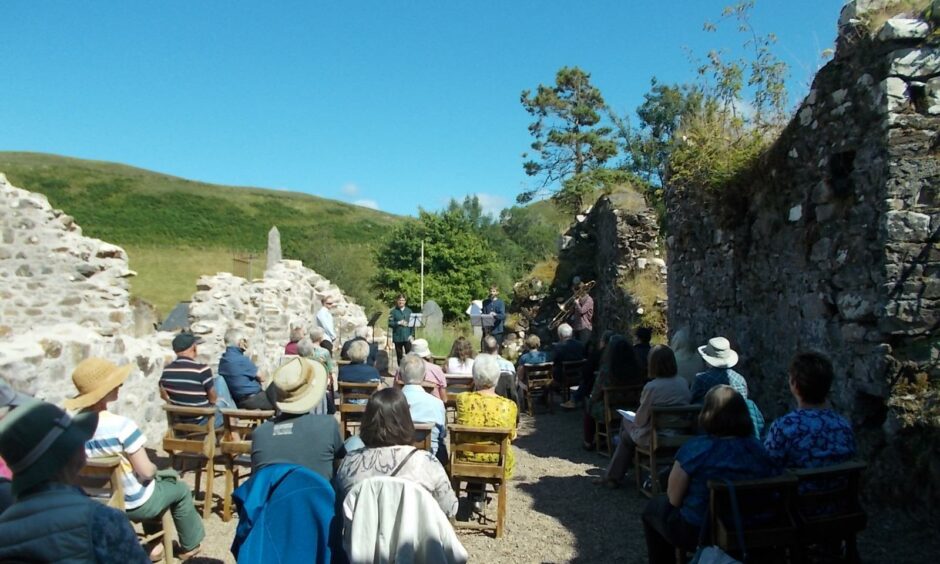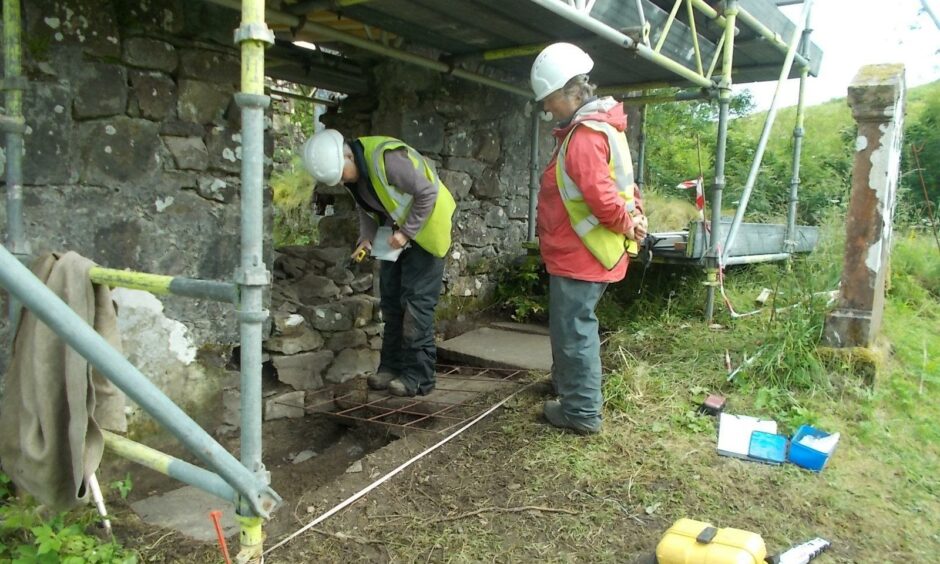The ruins of an 800-year-old church and graveyard are helping to highlight the rich history of Oban and its people.
Kilbride Church, situated three miles south of Oban, is the final resting place of the chiefs of the Clan MacDougall.
Sited in Lerags Glen astride an old drove road to central Scotland, the historic monument has a fascinating history.
It is part of a £200,000 preservation plan to stop the building from deteriorating any further.
The story of Kilbride stretches back to the time of Alexander II who became King of Scotland in 1214.
Power of Scotland
Alexander II decided to snatch Scotland’s strategically important west coast islands from the control of Norwegian King Haakon IV.
Liam Griffin, a trustee of Friends of Kilbride, said: “The islands to the west of Scotland, including Kerrera, which is only hundreds of metres away from the mainland, were under the thrall of the Norwegian king.
“Alexander II decided he was going to take these islands.
“He arrived with a fleet of birlinns and anchored up in Horseshoe Bay at Kerrera. To encourage the islanders to come on to his side he ordered the church of the day to take the cathedral from the isle of Lismore and put it at the church of St Bride of Lorn.”
This is just one of many tales that Mr Griffin, a volunteer tour guide who lives adjacent to Kilbride, is armed with to entertain visitors.
He came to live there some 30 years ago and was fascinated by the stories of some of the people who lie buried in the churchyard and cemetery.
He said: “It seemed a shame for this wonderful place with 800 years of history to just moulder away.”
Clan MacDougall
A very special part of Kilbride is The MacDougall Aisle, where many of the chiefs of the great clan lie.
One of the first prominent MacDougalls to be buried there was Dark John – or Iain Ciar MacDougall.
Mr Griffin said: “Iain Ciar rose as a Jacobite in 1715. He was on the losing side. His wife Mary of Sleat was exiled from their castle at Dunollie and forced to go and live in pauper rags on the isle of Kerrera.
“He had fled from Scotland to Ireland, where he had many adventures. He was eventually captured and found himself in chains on a ship in Chatham Dockyard to be sold as a slave.
“For some reason or another he received forgiveness and was allowed to return to Dunollie as a tenant where they lived quietly for the next few years.
“In 1737 Iain Ciar died. He would normally have been buried across Loch Etive at the family grave at Ardchattan Priory.
“But the weather was so bad they buried him at Kilbride, and I quote, ‘a ruined church in the hills, where lies broken in three parts, the Lerags Cross.'”
It was after this that Kilbride became a chosen resting place for many MacDougalls.
In 1919 a family who lived in the glen, possibly spurred by the horrors of World War I, had the Lerags Cross fixed and re-erected.
The cross was carved in stone by an Iona monk, in memory of Archie Campbell in 1516.
Because Christ was depicted crucified on it, the cross was considered idolatrous at the time of the reformation and was broken into three parts.
Friends of Kilbride was formed in 2015 to preserve and promote the church.
The not for profit group is leading an ambitious programme of restoration and renovation of the built heritage.
They welcome visitors from around the world and organise outdoor events for the benefit of the local community.
Trustees extend to as far afield as the USA. Friends of Kilbride work closely with members of Clan MacDougall and with many others around the world.
Hours of volunteer work have helped to clear the previously overgrown ruins. Specialist stone Mason Michael Hogg has helped to save its crumbling walls.
The preservation plan was led by architect Shauna Cameron.
Mr Hogg served his time with Historic Environment Scotland, providing him with ideal experience for the project.
Intricate work
He said: “I was trained on jobs like this. It is intricate. The skill is in not changing it, not ripping stuff down and building what you think it should be.
“It is about conservation. You take all the trees and foliage away and get it to the point where you can start rebuilding it as it was, or preserving it how it is.
“We use lime mortar. Nobody uses lime apart from stone masons. You can actually see the old lime in the parts that have been left.
“It’s not a case of ripping everything out and redoing it new. It is a preservation project.”
Kilbride church was abandoned when Oban started to develop as town during the Victorian era.
But as Mr Griffin says: “This was the stage upon which the history of this part of Scotland was written upon.
“There are dozens of gravestones in that church which tell the story. We do so with respect and in memory of the folk who lie there.
“I want to see it preserved as a place of peace where people can leave behind the noisy world for half an hour, think about the past and think about the future.”
The project has been made possible by funding from a range of organisations. This includes £68,500 from Historic Environment Scotland; £17,000 from Carraig Ghael Windfarm Trust; £3,500 from Clan MacDougall of North America; £900 from Ardmaddy Castle Clay Pigeon Shoot, to name but a few.
There have been countless donations from members of the public, which can range from a handful of coins to a £50 note.
At the end of each passionately delivered tour Liam declares: “It is a past too rich to have no future. We’d appreciate it if you would drop a bawbee or a fiver, whatever you can, into our collecting tin.
“Your donation won’t get the £30,000 west gable project completed, but it will help pay for the fuel that the mower needs, or a new print run of brochures.”
